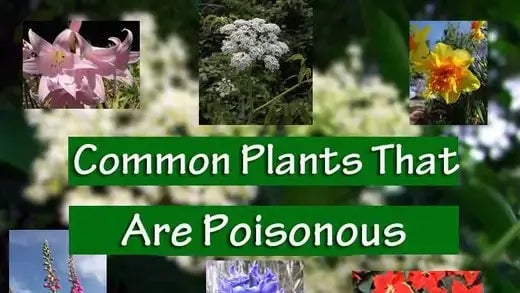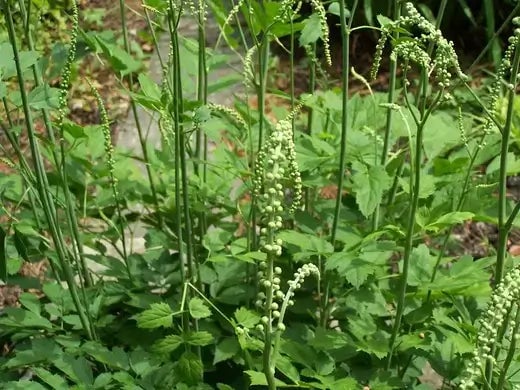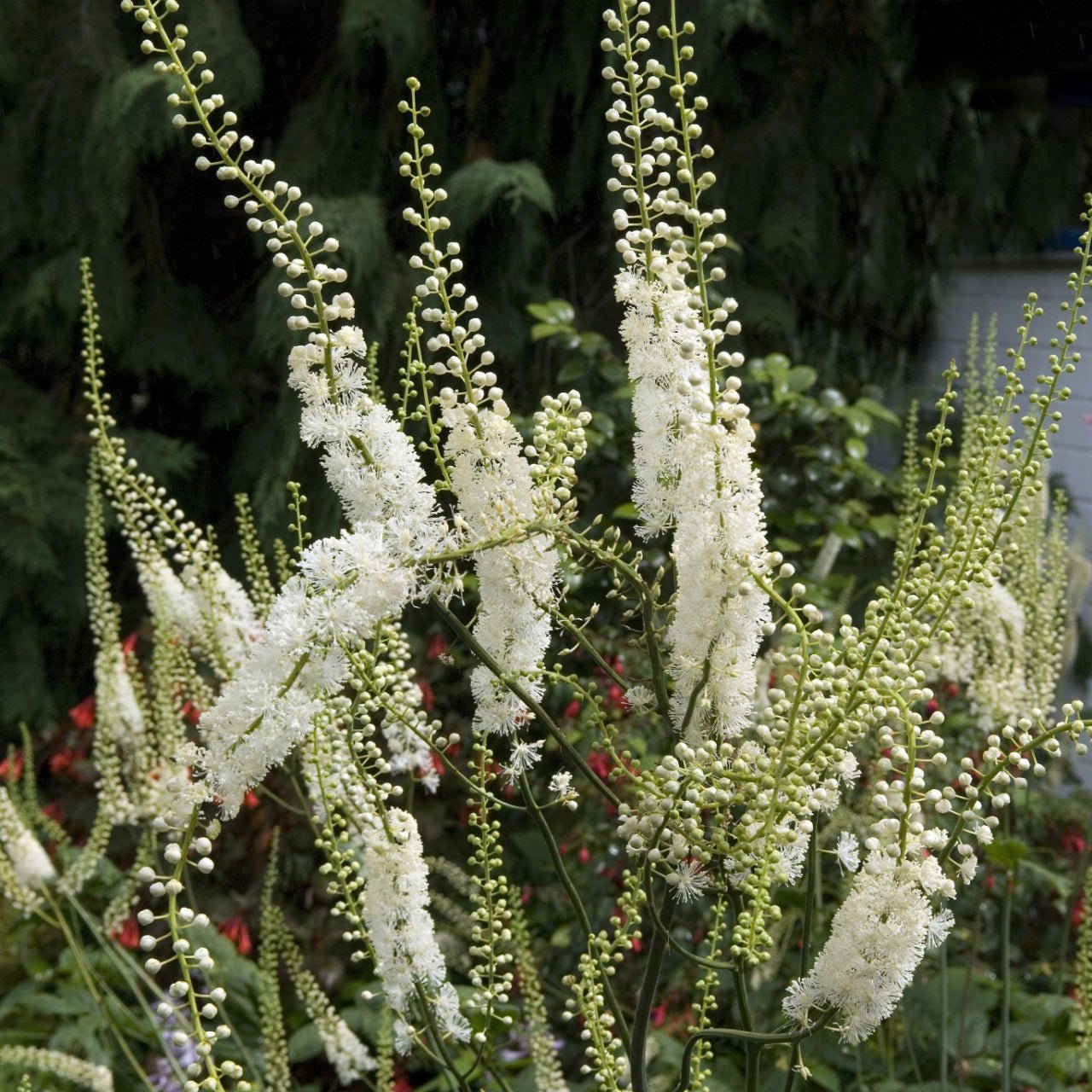
Nestled within the forests of North America, the tall, graceful stems of the black cohosh plant sway gently in the breeze, carrying with them a rich history of traditional medicinal use. Scientifically known as Actaea racemosa, indigenous people have revered black cohosh for centuries for its diverse therapeutic properties. From alleviating menopausal symptoms to addressing various ailments, black cohosh has garnered attention in contemporary herbal medicine. In this discourse, we delve into the profound herbal uses of black cohosh, exploring its historical significance, medicinal properties, and modern applications.
Historical Significance Of Black Cohosh
Black cohosh has been used as a medicinal herb for several centuries, with its roots tracing back to the indigenous North American communities. The Cherokee, Iroquois, and Algonquin tribes were among the first to recognize the therapeutic benefits of black cohosh. They regarded it as a powerful herb that could address a range of ailments.
One of the primary uses of black cohosh was to alleviate gynecological issues, including menstrual cramps, hot flashes, and different signs associated with menopause. The herb contains phytoestrogens, which simulate the effects of estrogen in the body and can help regulate hormonal imbalances.
In addition to its benefits for women's health, black cohosh was also used as a natural remedy for rheumatic pains and inflammatory conditions. The herb has anti-inflammatory properties that can assist in relieving joint pain and stiffness, causing it a favored choice for those with arthritis.
Black cohosh was also used to treat snakebites in some Native American communities. The herb was believed to have antivenom properties and was used to draw out the poison and reduce swelling.
Black cohosh has a rich history as a medicinal herb with many potential health benefits. While further research is needed to understand its possible uses fully, it remains a popular natural remedy for various conditions.
European settlers soon recognized the medicinal value of black cohosh, adopting its use from indigenous peoples. By the 19th century, black cohosh had gained popularity in Western herbalism, with physicians prescribing it for various conditions, particularly women's health concerns. Its reputation as a "women's herb" flourished, earning it the moniker "black snakeroot" due to its efficacy in treating snakebites.
Medicinal Properties Of Black Cohosh
The therapeutic potential of black cohosh stems from its rich phytochemical composition, which includes triterpene glycosides, phenolic acids, and flavonoids. Its primary active constituents are actin and cimicifugoside, which exert estrogenic effects, making black cohosh particularly beneficial for women's health.
One of the most well-known applications of black cohosh is in managing menopausal symptoms. As women transition through menopause, they often experience a range of discomforts, such as hot flashes, night sweats, and mood swings. Black cohosh has demonstrated estrogen-like effects, which may help alleviate these symptoms by modulating hormone levels. Additionally, its anti-inflammatory properties may contribute to reducing the severity of menopausal symptoms.
Beyond menopause, black cohosh has been explored for its potential to address menstrual irregularities and premenstrual syndrome (P.M.S.). By exerting regulatory effects on hormonal balance, black cohosh may help normalize menstrual cycles and alleviate associated symptoms such as cramping and mood disturbances.
Black cohosh is an effective herb in managing rheumatoid arthritis and osteoarthritis. It is believed that the anti-inflammatory and analgesic properties of black cohosh make it a valuable adjunct in mitigating joint pain and inflammation, enhancing general mobility and rate of life for individuals who have arthritis.
Black Cohosh Helps With Joint Problems
Rheumatoid is an autoimmune disease that causes chronic inflammation of the joints. Black cohosh effectively reduces the inflammation associated with rheumatoid arthritis, thereby reducing joint pain and improving mobility in affected individuals.
Osteoarthritis is a joint disorder due to everyday wear and tear. Black cohosh effectively reduces the pain and inflammation associated with osteoarthritis, thereby improving overall mobility and quality of life in affected individuals.
In summary, black cohosh is a promising natural remedy for individuals who have rheumatoid arthritis and osteoarthritis. Its anti-inflammatory effects make it a valuable supplement in managing joint pain and inflammation, enhancing overall mobility and quality of life for individuals who have arthritis.
Modern Applications Of Black Cohosh
In contemporary herbal medicine, black cohosh remains a versatile remedy for various health concerns. With the rise of natural alternatives to conventional pharmaceuticals, black cohosh has garnered renewed interest among practitioners and consumers alike.
Supplements containing black cohosh extract are readily obtainable in fitness nutrition stores and online merchants, offering a suitable option for people seeking relief from menopausal symptoms or other conditions. These complements typically come in different forms, including capsules, tablets, and tinctures, allowing for flexible dosing regimens tailored to individual needs.
TN Nursery Offers Black Cohosh
Clinical research on black cohosh has yielded mixed results, with some studies supporting its efficacy in managing menopausal symptoms while others report inconclusive findings. Despite the lack of consensus, many women continue to find relief from hot flashes, night sweats, and mood disturbances through the use of black cohosh supplements.
Furthermore, black cohosh is increasingly incorporated into integrative approaches to women's healthcare, which include complementary treatments and lifestyle interventions. Its gentle yet effective nature makes it a preferred choice for individuals seeking natural alternatives with fewer side effects than synthetic hormones or pharmaceuticals.
You Should Grow Black Cohosh
Black cohosh is a fascinating and valuable herb used for centuries in indigenous North American cultures to address various health concerns. Today, it remains a popular and widely used botanical remedy that has captured the attention of herbalists, researchers, and consumers.
Despite its many potential benefits, much must be learned about black cohosh. Further research is needed to fully understand its mechanisms of action and possible side effects. However, its long history of traditional use and its continued popularity suggest that it is a promising natural solution for common ailments.
As we continue to navigate the complexities of modern healthcare, it is essential to recognize the wisdom of traditional herbal medicine. Black cohosh is a shining example of the enduring legacy of these remedies, and it holds great promise for those seeking safe and effective natural solutions to their health concerns.
Herbal Uses for Black Cohosh
Herbal remedies are the answer for people looking for an alternative to prescription medicine and over-the-counter products. Many prescription medications are derived from herbs and plants that are already found in nature. Did you know that simple aspirin is made from white willow bark?
Many products on the market advertise having some herb or another in their contents. Many of these are fine, but they only carry a small percentage of any herb. If you could have a product that would skip all the by-products, fillers, perfumes, and unwanted preservatives, why would you buy over-the-counter items?
One of the best-known herbal medications is Black Cohosh. This great little plant can work so well that most marketable products for menopause issues advertise it as an ingredient in their products!
Where can I get Black Cohosh?
So what is Black Cohosh, you ask?
Actaea Racemosa (Black Cohosh) is a flowering plant native to North America. It produces small white puffs of flowers and can grow from 9 – 24 inches in height. Cohosh flowers will bloom from late spring to early summer.
It has large, compound leaves that form an underground rhizome. The basal leaves are long and broad, growing up to 3 feet long. The flowers have no petals but a sweet smell that attracts beetles, flies, and gnats.
Let's talk about herbal uses for cohosh.
Native Americans used it for gynecological disorders, sore throats, kidney problems, and depression.
Black Cohosh, in recent years, has been used for its Estrogen-like properties and its aid in Osteoporosis. The plant is known for possessing analgesic, sedative, and anti-inflammatory properties. The plant works exceptionally well for hot flashes, mood swings, night sweats, vaginal dryness, menstrual cramps, and bloating.
There have been no long-term studies, but to date, all short-term studies that talk about herbal uses for cohosh show very few side effects.
Herbal supplements can be bought 100% organic without additives or preservatives. Black Cohosh is usually taken in various forms such as extracts, dried powder, tinctures, tea infusions, tablets, or capsules. Any one of these forms is healthy and fast-acting.
Source of Information on Black Cohosh
https://www.tnnursery.net
Read more

Plants yield a variety of beautiful foliage, but you must always be careful since many petals are poisonous. Plants produce toxic leaves and fruits as a way of fending off predators. Many of these ...

You can shop confidently through us when you buy your garden plants from TN Nursery. We are third generation nurserymen for the past 69 years.We are certified by the Tennessee Department of Agric...




